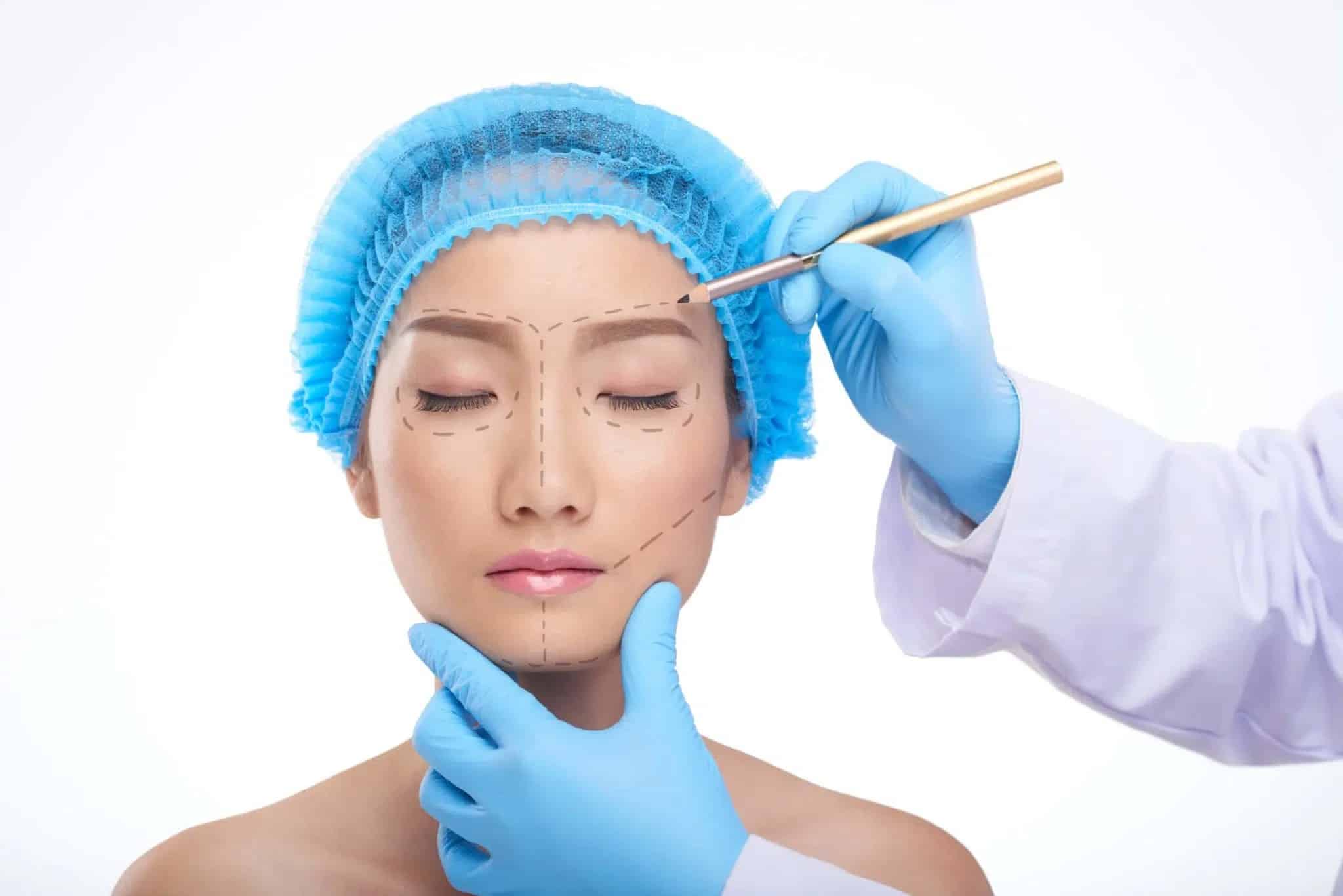Facelift Variations (Cont’d.)
When you think of a facelift, what do you imagine? Would you be surprised to know there are several different kinds of facelifts, depending on different facial conditions? At the Eye and Face Center in Denver, Colorado, Dr. Fante does them all.
Facelifts can be categorized by these criteria:

- The type of incision needed
- The number of tissue layers to be treated
- The specific area of the face being treated
- The invasiveness of the specific procedure needed
Traditional Facelift Surgery
This is the facelift that movie stars have been requesting for decades. It’s the one that can give that youthful look by tightening the skin back toward the ears. Dr. Fante will make incisions on each side in an S shape from behind the hair at the temple, in front of the ear, then under and back into the hairline.
Beneath the skin is the SMAS (superficial musculoaponeurotic system), a sheet of small muscles and connective tissue beneath the skin. Another name for a traditional facelift is the SMAS facelift. The SMAS covers the face and neck and protects the deeper-lying structures. The skin is separated from it, and the SMAS is lifted to a higher position. Dr. Fante will remove the excess skin, reshape the remaining skin over it, to give your face the younger and fresher look it had before the force of gravity worked its mischief on you.
Liposuction below the chin and in the neck often accompanies a traditional Facelift. Any scars remaining are virtually invisible, largely hidden in the hairline.
This traditional lift, when done well, provides the most long-lasting benefits and can dramatically enhance the facial appearance of older people who are beginning to notice severe sagging and laxity in their face.
Deep Plane or Full Facelift
The full or deep plane facelift is similar to the traditional facelift. Incisions are the same, Dr. Fante will detach the SMAS from the skin to lift both upwards. The difference is in how deeply the surgery is done in the mid-face to separate the SMAS from muscles and nerves beneath it. In order to further improve the cheek or midface area, deep plane release and elevation is accomplished using hidden incisions inside the mouth.
As with the traditional facelift, the SMAS is pulled gently up and back to restore the youthful facial contours. The deep plane lift is often recommended as a more lasting solution for people with sagging cheeks who might otherwise consider fillers or implants.
The platysma is the muscle below the neck skin. As we get older, it loses elasticity and develops ridges. A platysmaplasty is surgery to separate this muscle from the skin, remove the ridges (also known as bands or chords), remove excess skin, and place it all in a tighter position. This restores a youthful look to the neck and jawline.
If you’re between the ages of 35 and 60, you might notice that your cheeks are sagging and the folds of skin around your nose (nasolabial folds) are starting to droop. The mid facelift may be just what you are looking for. The mid-face is the central third of our face, from the lips to the eyes including the smile lines and nasolabial folds.
With this procedure, several small incisions are made along the hairline and inside the mouth. Using an endoscope (a tiny camera at the end of a narrow tube), Dr. Fante can lift and reposition the fat, muscles, and soft tissues. By viewing the procedure on a computer monitor, Dr. Fante achieves a great deal of control and precision over the procedure.
There is little scarring, which is usually virtually invisible. One side effect of a mid facelift may be extra swelling, usually lasting three weeks. But after your procedure, you’ll notice an improvement in those nasolabial folds and your cheekbones will be full and shapely, giving you a much more youthful appearance, and you’ll also notice that your under-eye area looks better. When combined with a lower eyelid lift (blepharoplasty), the results can be very impressive.
The Subperiosteal Lift
This variation is a step beyond the deep plane facelift and a variation on the mid facelift. It works on the midface, lifting and repositioning the cheeks vertically, smoothing those folds and giving the upper cheeks a fresher and more youthful shape. It works at a deep level, below the muscles, and right down to the bone. You enjoy longer-lasting results than procedures which lift only the skin layers and the scars are entirely hidden making it very desirable for working men and women who want subtle improvement without visible scars.
The Skin Lift
This variation lifts and repositions the skin for people who desire a less significant difference in their appearance or who have previously had a facelift and desire a touch-up.
The Mini-facelift
The term ‘mini-facelift’ describes a somewhat temporary solution for younger people who do not need a true facelift. It is less invasive than the other methods described, and may only work on a particular part of the face, depending on what the individual needs. The smaller scope of a mini-lift often permits surgery to be performed in the office under local anesthesia.
Just as there are many different types of patients, there are different facelift variations to meet their needs.
How Long Do Facelift Results Last?
Results last up to ten years, although other procedures may be recommended for maintenance, such as botulinum toxin injections or facials.
Schedule a Consultation
These various types of facelifts are some of the more popular procedures offered by Dr. Fante at the Eye and Face Center in Denver, Colorado. If you would like to find out whether you’re a good candidate, please call 303-839-1616 or email us to schedule an initial consultation. Ask questions, meet our staff, look around our comfortable facilities, and think about how you can enhance your facial appearance.

